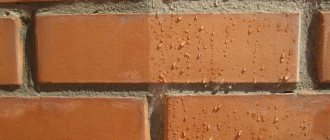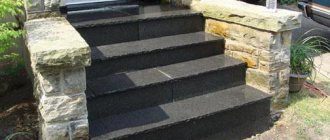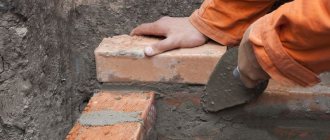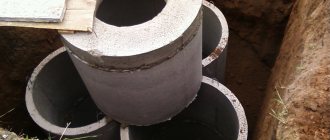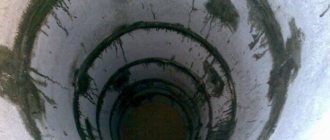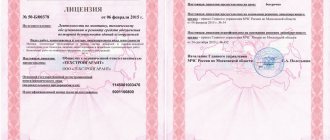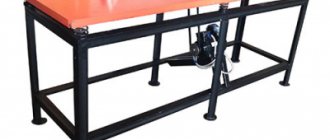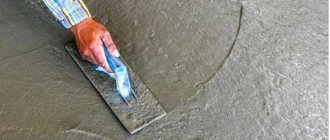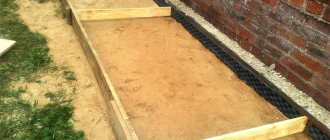Concrete protection - offers materials and technologies for concrete protection. Repair and protection of concrete - services for the installation of protective coatings in Tyumen.
Concrete constantly experiences various destructive influences - mechanical and chemical loads, exposure to water and the atmosphere. Therefore, the service life of concrete structures without protection is quite limited. What needs to be done to make concrete floors last as long as possible? You can use special additives, the purpose of which is to protect concrete from moisture and protect concrete from destruction under the influence of a specific environment. But each individual supplement cannot solve the problem comprehensively.
We offer protective, economical impregnations for concrete that effectively solve the complex problem of protecting concrete floors and other concrete structures.
Impregnations for concrete - types, price of materials, technologies, and recommendations for the installation of protective coatings - see: Impregnation for concrete
Need some advice? Call
Processing methods
One of the most common methods of protection can be considered the advance creation of a moisture-resistant concrete product or structure (primary protection).
Plasticizer is an additive and floor paint that has proven itself in the production of high-quality ready-mixed concrete and reinforced concrete products.
Basically, this method involves the following:
- correct selection of components;
- chemical impregnation of components;
- high-quality manufacturing;
- correct installation and operation.
Plasticizer and superplasticizer are the most common chemical additives for concrete used in the preparation of mixtures. They contribute to good water resistance, frost resistance and reduce moisture absorption of manufactured concrete.
Basic methods of protecting concrete and reinforced concrete structures
It is worth noting that during any construction or repair work you should be guided by current regulatory documents, and not by the advice of “experienced” builders. In terms of protecting concrete structures from corrosion, the main document is GOST 31384-2017, which regulates three types of protection:
- Primary.
- Secondary.
- Special.
In private housing construction, two types of protection are usually used - primary and secondary.
In general construction practice, the essence of primary protection is the maximum compaction of concrete using special additives and vibration of the poured structure in several ways. The result of these measures is a reduction in the porosity of the finished structure and, accordingly, a significant reduction in water absorption and water resistance.
Penetrating waterproofing
Penetrating waterproofing is a system for protecting concrete from water and aggressive environments.
Penetrating concrete waterproofing is a convenient way to protect concrete structures from moisture . This method allows you to best preserve concrete from possible destruction caused by excessive impregnation with water. In another way it can be called secondary protection.
Today, impregnation of concrete with a mixture of water and Penetron is considered one of the most common and reliable ways to prevent concrete destruction. The more moisture in concrete, the higher the efficiency of this mixture. Penetron, with the help of water, penetrates the capillaries of concrete and reacts with oxides and salts to form crystals inside voids and crevices that are resistant to water, but easily allow steam to pass through, thereby giving concrete the useful ability to “breathe.” These crystals grow as long as there is moisture and small cracks.
Impregnation of the Penetron mixture can easily penetrate 40-60 centimeters deep into the concrete. Due to the presence of surface tension forces in liquids, the crystals are so strong that they can withstand the pressure of a two-meter column of water and are frost-resistant up to 400 cycles. Impregnating concrete with Penetron is easy and profitable, because then you won’t have to spend a lot of money on frequent repairs and finishing - it’s enough to impregnate the concrete product with this mixture once. In addition, impregnation of concrete with Penetron is environmentally friendly and safe. Thanks to this, it can be used in domestic drinking water supply and even in the food industry. In general, impregnation with Penetron will ensure a decent service life for your product.
Causes of destruction
The main factors leading to the destruction of a concrete structure are: high humidity, aggressive components of atmospheric air, temperature changes, steam, mechanical loads, exposure to biological microorganisms. The destructive effect occurs both directly, through chemical interaction, and indirectly, through the accumulation of microcracks.
One of the most dangerous types of concrete destruction is corrosion. The destruction of structural elements most often occurs due to corrosion. In this case, under the influence of moisture, lime dissolves in the concrete, which is washed out of it, destroying the structure. Another direction of corrosion is the expansion and leaching of calcareous components under the influence of water sulfates, as a result of which cracks appear on the surface of the concrete, leading to its gradual destruction.
The destruction of reinforced concrete occurs due to corrosion of reinforcement. When moisture gets in, the iron inside the concrete oxidizes and salts form, which increase the volume of the reinforcement and its destruction.
The most severe destruction is caused by a combination of several types of negative impacts.
Surface insulation
Surface waterproofing is intended mainly for external treatment of the walls of a structure in order to prevent direct contact with moisture.
Surface waterproofing is undoubtedly considered the most common protection against destruction today. It prevents contact of concrete structures with water. For waterproofing basements and foundation walls, polymer-bitumen and bituminous materials are usually used. Various putties are usually used to waterproof seams.
Standard protection, which involves the use of coating and pasting materials to protect structures from moisture, has a number of undoubted positive qualities: good water resistance, density and resistance to chemicals. In addition, they have a significant drawback that overshadows all the advantages: these materials have a short service life and, due to the incompatibility of rheological properties, work separately from concrete. During the operation of these materials, destruction or detachment of the material from the concrete structure may occur. Technological difficulties may also arise when using traditional materials. The concrete must be well dried; when applying such materials, strict adherence to technological parameters is necessary; they are almost impossible to use in structures where there are open leaks.
Protecting concrete from moisture
To protect concrete and brick buildings from moisture, you need to use various waterproofing agents. Particularly effective are those that penetrate deeply into the structure of the material and clog its cracks and pores. We will talk about such technologies.
Protecting concrete structures with moisture-proofing agents is a very important stage in the construction of any structure, and it has gained particular relevance in our country, especially in the northern regions. Recently, this direction has begun to move forward very quickly.
Professionals have studied modern methods of carrying out such protection, and at the moment they actually have no unsolvable issues. Modern moisture-proofing products guarantee successful protection of constructed concrete systems and brick buildings from moisture and microorganisms that destroy their structure.
Methods for protecting concrete objects are divided into the following types:
- protection of concrete objects with cement-based means that do not allow moisture to pass through;
- protection of concrete objects from the forceful effects of water masses;
- protection of concrete structures from external climatic conditions;
- restoration of concrete structures to their original condition;
- protection of the external part from the influence of microorganisms.
The methods listed above are extremely complex. It is especially worth paying attention to the fact that they will not give sufficient results each separately.
Other methods
We can mention another way to save concrete from moisture - installing a drainage system. This type of protection is more suitable for street and basement spaces, where a lot of water accumulates in the area of concrete products. There are two types of drainage:
- point (drainage) drainage;
- linear drainage.
These 2 drainage systems are well suited for protecting the foundation and blind area of a building from the sudden manifestation of natural factors such as rain and running water, which destroy even durable concrete. It can be used as an addition to all other protection options.
There are also disadvantages to this method of solving the problem:
- cost;
- difficult installation;
- frequent maintenance;
- protection only from large water flows.
In general, you can use this method if there is an opportunity and urgent need to install a drainage system.
What do you need to know and consider when choosing a protective material for concrete outdoors?
After applying protective impregnation to the surface being treated, a hydrophobic coating is formed on it. It is represented by an invisible layer of polymer that prevents moisture from penetrating into the pores. Other properties of water-repellent impregnations using the example of Cemmix products:
- impart water-repellent properties;
- prevent the appearance of efflorescence;
- reduce pollution of facades from precipitation;
- do not allow mold and fungi to multiply;
- increase the frost resistance of concrete structures located outdoors;
- provide durability and wear resistance;
- increase heat resistance.
AquaStone. It is a milky-white liquid and may have sediment. Made using water, aqueous wax emulsion and an alkyd base. Suitable for application on artificial and natural stones, for all types of concrete, cement-fiber boards, fired clay tiles, bricks.
AquaStop Colorless. Unlike AquaStone, in addition to water and an aqueous wax emulsion, it contains an acrylic dispersion. It has a wider list of surfaces for processing: shell rock, brick, slate, limestone, cinder blocks, DSP, ceramic tiles, stone. Plaster, tiles and concrete.
AquaStop Gloss. After treatment, the surface acquires a glossy shine, the so-called “wet stone” effect.
AquaStop Reach Color. Transparent impregnation-hydrophobizer, which enhances the natural color of the treated material and increases its saturation. Due to this, it is possible to emphasize the texture of the surface.
The use of waterproofing impregnations is in demand wherever concrete and stone surfaces are exposed to the destructive effects of precipitation, moisture and other liquids. Especially often the compositions are applied:
- On brick walls, tiled facades.
- For concrete floors and areas of laboratories, workshops, and parking lots.
- At the bottom of pool bowls, drainage trays, wells.
- For blind areas, paving slabs, fences, curbs.
Based on their composition, all impregnations are divided into organic (polymer) and inorganic (synthetic). The action of organic is based on enveloping the surface of concrete pores and creating a waterproof film, which at the same time allows moisture and air vapor to pass through, the surface “breathes”. Synthetic ones work differently.
To protect concrete and stone structures, organic compounds are widely used. They are divided into several more subspecies:
- Acrylic. Budget impregnations, resistant to ultraviolet radiation, chlorides and moisture.
- Polyurethane. They penetrate deep enough into concrete - about 6 mm. Can be used indoors and outdoors, as well as in areas under awnings.
- Epoxy. Available in colorless and colored formulations. More often used in interior work than in exterior work. Compared to polyurethane ones, they do not smell as strong.
All impregnations are classified according to one more criterion - purpose. Depending on this factor, the compositions are distinguished:
- From mold and mildew. These impregnations are called antiseptics. They are designed specifically to protect against the appearance of fungus and are applied immediately before finishing.
- From corrosion. Anti-corrosion agents prevent the appearance of rust by increasing resistance to moisture and dampness.
- From moisture. Universal hydrophobic impregnations that fill all pores, voids and cracks. Particularly relevant for processing structures located on the street. In interior work they are used where concrete is used in conditions of high humidity.
Depending on the depth of penetration, the following types of waterproofing are distinguished:
- Penetrating. The depth of its penetration into the concrete reaches 10-12 mm. This is the most reliable way to protect the material from moisture and extend its service life.
- Superficial. This includes film-forming impregnating compounds. From the name it is clear that they form a thin waterproof film on the treated surface, which becomes an obstacle to moisture.
We suggest you familiarize yourself with: Attaching foam plastic to concrete
Impregnations with different bases are used in specific situations. It is rational to use silicate (inorganic) mixtures:
- If it is necessary to remove dust from a concrete floor at a minimum cost.
- In case the structure will not be subjected to intensive use.
- If there are roughnesses and unevenness on the treated surface.
If the structure will be used under intense exposure to a chemically aggressive environment, it is better to buy polymer impregnations. They are also relevant for high demands on the aesthetics of the treated surface.
| Superplasticizer name | AquaStone | AquaStop Colorless | AquaStop Gloss | AquaStop Reach Color |
| What surfaces can it be applied to? |
|
|
|
|
| Peculiarities | Impregnation-hydrophobizer, increasing the durability, heat resistance and frost resistance of the treated surface. | Complex moisture-repellent impregnation that does not change the color of the base. | Impregnation with a glossy surface effect ("wet stone" effect). | Transparent impregnation, enhancing the color saturation of the surface layer. |
| At what temperature can it be used, °C | From 5 to 35 | From 5 to 35 | From 5 to 35 | From 5 to 35 |
| Drying time, hours | 3 | 3 | 3 | 3 |
| Release form | Plastic canister, 5 l | Plastic canister, 5 l and 20 l | Plastic canister, 5 l | Plastic canister, 5 l |
| Weight | 5.3 kg | 5.3 kg, 21 kg | 5.3 kg | 5.3 kg |
| Consumption of solution per 1 m2 of concrete, ml | 150-200 | 150-200 | 150-200 | 150-200 |
Primers
Primers are rarely used as a finishing material. Most often, they act as an internal link between the concrete and the protective coating. Penetrating primers help fill the pores in concrete, significantly enhancing its strength and increasing the overall effectiveness of moisture protection with roll or coating materials.
Another advantage when working with primers is the absence of joints and seams, making them ideal for treating large areas, providing complete surface protection. In addition, they bind all dust from the concrete, creating optimal conditions for applying a layer of protective coating.
Mastics
Mastics, like primers, usually form the primary or secondary layer in an insulation system. They are based on polymers and bitumen, the former are more effective in terms of resistance to temperature fluctuations and complete waterproofness, while bitumen analogues are not as effective against ultraviolet radiation and temperature changes, but significantly benefit in price.
Important: bitumen mastics are not recommended for use in hot climates - they can melt and lose their adhesive properties, compromising the strength and integrity of the insulating structure.
Liquid rubber
Liquid rubber combines high strength and elasticity, due to which it provides high-quality protection from water, temperature changes and mechanical damage under moderate load. The beautiful structure and large selection of colors allow this material to be used as a finishing coating.
Liquid rubber has only one significant drawback, which is the complex process of its preparation and application. You need to use special painting tools in the form of spray guns or use the pouring method to cover the concrete with it. In addition, it is necessary to monitor the thickness of the rubber layer, since if applied unevenly, its performance characteristics may deteriorate, making its independent use very difficult.
Membranes
Membranes are an ideal solution for protecting concrete roofs and objects that rarely come into contact with chemicals used in everyday life. Strong and durable, they perform not only a protective, but also an insulating function. For cold climates, it is best to choose an EPDM membrane, which contains rubber and has excellent frost resistance.
The membranes are laid by soldering using construction torches, which requires special knowledge and experience, so it will be difficult to install them yourself. The disadvantages include the high price, but it is justified by the long period of operation and excellent performance of this material.
Bitumen roll materials can serve for a very long time, maintaining excellent resistance to moisture, fire and chemical elements throughout the entire period of operation. At the same time, they have a high degree of resistance to mechanical damage. Among the disadvantages, it is worth noting the large consumption of material for joining seams (10 centimeters or more), as well as the complex installation procedure. Bitumen roll materials are installed using special construction burners, and therefore their installation requires special skills.
